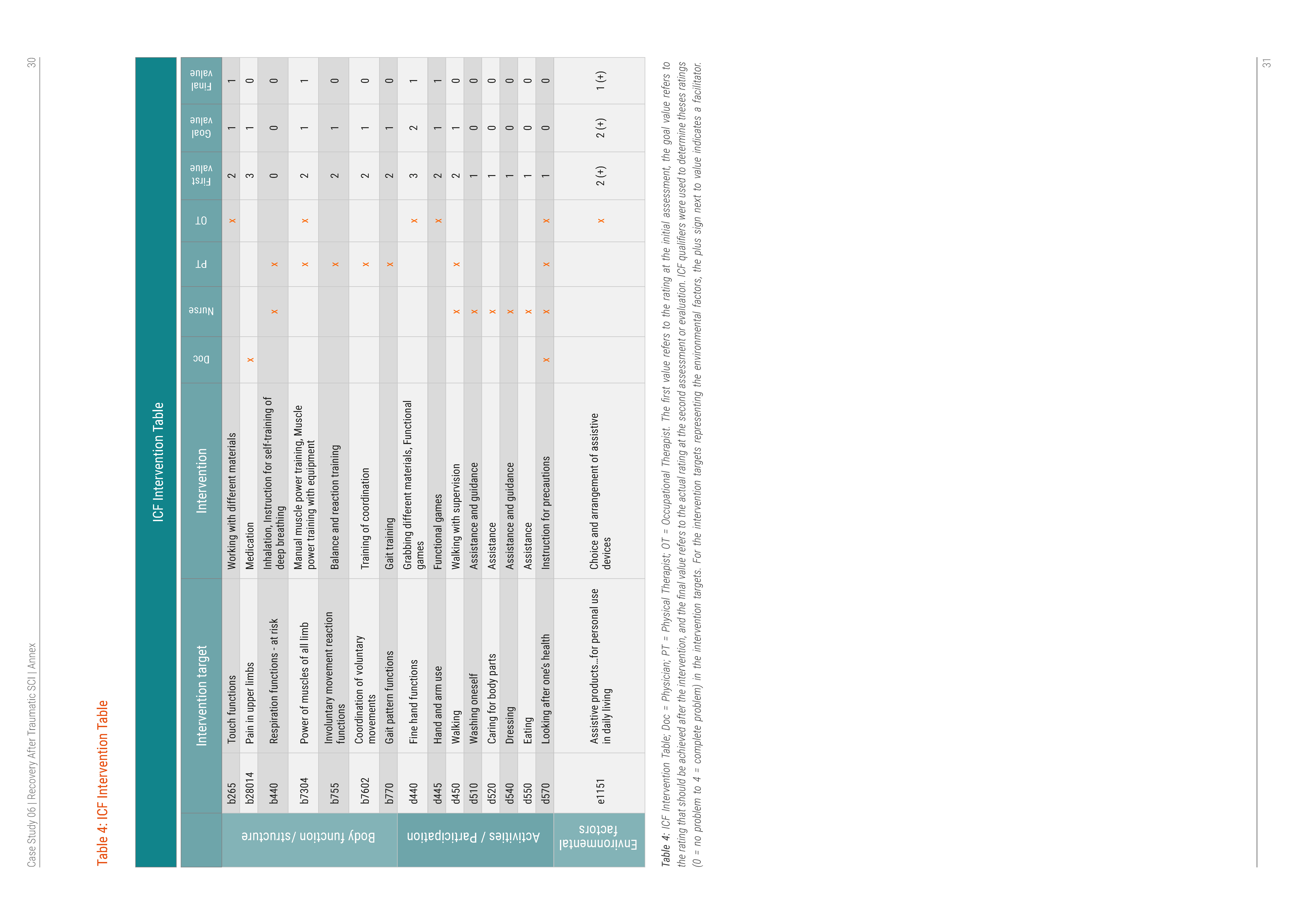Assignment and Intervention
Each of the intervention targets that were defined in the assessment phase of the Rehab-Cycle® was assigned to the appropriate rehabilitation team members – physician, nurse, physical and occupational therapist.
The ICF Intervention Table (see table 4) shows the intervention targets that Mr. Seiler's rehabilitation team planned to address with specific interventions, the interventions themselves and the team members assigned to perform the interventions.

Table 4: ICF Intervention Table; Doc = Physician; PT = Physical Therapist; OT = Occupational Therapist. The first value refers to the rating at the initial assessment, the goal value refers to the rating that should be achieved after the intervention, and the final value refers to the actual rating at the second assessment or evaluation. ICF qualifiers were used to determine these ratings (0 = no problem to 4 = complete problem) in the intervention targets. For the intervention targets representing the environmental factors, the plus sign next to the value indicates a facilitator.
An example of an intervention target was d450 Walking; it was designated to meet cycle goal 2, 'independence in moving around in different locations'. While the rehabilitation team was initially hesitant to allow Mr. Seiler to walk by himself, they later agreed given his rapid recovery and enthusiasm. The interventions to address this target was carried out by the nurse and physical therapist who accompanied Mr. Seiler during brief walking attempts.
Another example of Mr. Seiler's intervention targets was 'looking after one’s health'. This target, that was assigned to all rehabilitation team members, was integral to achieving his service-program goal 2 'independence in daily activities', as well as Mr. Seiler's overall recovery. The interventions that were planned to address this intervention target focused on appropriate health behaviour. This included counseling and education to prevent future complications, such as pressure sores, and further injury to his cervical spine. He was taught exercises that he was able to do on his own.
Reflective of Mr. Seiler's positive personal factors i.e. strong will and self-discipline, he was not only compliant with the interventions, he took on an active role and independently performed additional training.
Mr. Seiler is an extraordinary patient. He has lived a very disciplined life and has an extraordinary awareness of his body. He’s extremely dynamic, always in motion with both body and mind. Considering all of this, he is also very realistic and has strong decision-making skills. Attributes like these really supported him during rehabilitation. He has made enormous progress in his recovery process over a very short period of time.
Mr. Seiler’s physical therapist at the end of the Rehab-Cycle®
The interventions were carried out over a period of four weeks. After the four weeks, a final evaluation was performed to determine how well the goals were met.